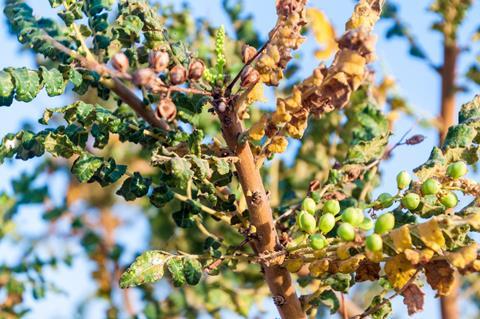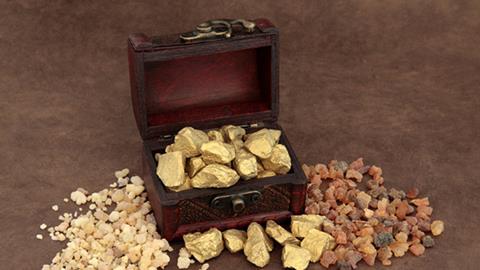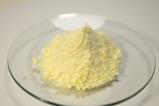Phil Robinson tells us the story of these compounds, as written by Simon Cotton and accompanied by the Royal Society of Chemistry choir, Choirality.
Meera Senthilingam
This week, good tidings Phil Robinson brings…
Phil Robinson
We don’t know that there were Three Kings. The Gospel according to Matthew doesn’t say, but since three gifts were brought to the Infant Jesus, it’s been assumed that three men were associated with them. Neither does the Gospel say that they were kings, they are described as wise men – Magi, from the Greek magoi. For centuries they were thought of as philosophers. It was only in the second millennium that they came to be seen as kings, and shown in art as crowned figures.
Frankincense to offer have I;
Incense owns a Deity nigh;
Prayer and praising, voices raising,
Worshipping God on high.
Two thousand years ago, frankincense and myrrh were as valuable as gold, the third gift of the Magi. Today, though, it will cost you a thousand times more to buy gold than to buy the same quantity of the other two.

Like money, gold does not grow on trees, but frankincense and myrrh certainly do, typically on the Arabian Peninsula. In particular, frankincense is collected by a method like that used by rubber tappers to obtain latex – cutting into the bark of the Boswellia sacra tree, when a milky white sap comes out. The first sap is discarded, they then collect what is obtained on further cutting. The sap dries into a solid yellow droplet, this is frankincense.
Myrrh is mine, its bitter perfume
Breathes a life of gathering gloom;
Sorrowing, sighing, bleeding, dying,
Sealed in the stone cold tomb.
Myrrh is collected similarly, from trees of the species Commiphora. Again, the yellow resiny sap dries out to a solid, usually red-brown in colour.
Frankincense was traditionally burned in temples by the ancient Egyptians, Romans and Greeks, to symbolize prayers rising to the gods. Historically, myrrh was more often used in perfumes and medicines, for healing wounds (it is put into mouthwashes and toothpaste to this day) and to preserve bodies.

Both frankincense and myrrh are mixtures of hundreds of different compounds; their composition varies according to climate and geography, as this affects the biochemical processes going on in the plants. This ‘fingerprint’ has been used by archaeologists to identify ancient frankincense samples, such as a resin found in the tomb of a sister of an Egyptian pharaoh of the XIIth Dynasty (19th c. BC). The most abundant molecules found in frankincense resin are boswellic acids. Boswellic acid has a structure not dissimilar from some hormones like testosterone, and also to steroids found in myrrh, (like cholest-5-en-3ß-ol). Steam distillation of frankincense resin gives oil of frankincense, whose analysis shows a variable range of terpenes present. It is these molecules, like a- and ß-pinene and limonene, that give frankincense its smell, whilst myrrh’s aroma comes mostly from furanosesquiterpenes such as furanoeudesma-1,3-diene and other molecules like lindestrene and dihydropyrocurzerenone.
In the 21st century, scientists are having a close look at molecules found in both frankincense and myrrh. From tests on mice, chemists at the University of Florence have found that molecules in myrrh act on the brain’s opioid receptors, explaining its painkilling action; furanoeudesma-1,3-diene has been identified as a painkilling molecule. Molecules in myrrh, particularly sesquiterpenoids show real potential against some cancers.
Boswellic acids have anti-inflammatory and antiarthritic effects, so that they are finding pharmacological use in both East and West. These compounds seem to work by preventing the body from making pro-inflammatory compounds, whilst they also exert antitumor effects in colorectal cancer cells. In 2008, American and Israeli scientists identified a constituent of incense called incensole acetate as an agonist to the TRPV3 channel, involved in the perception of skin temperature. They suggested that it may enhance euphoric feelings during acts of worship. Other studies indicate that this psychoactive molecule may be an antidepressant. More recently it has been found that incensole acetate protects mice from neurological damage after head trauma.
Much remains to be done to translate these discoveries into practical medicine, but it really does appear that in the chemicals that they
Meera Senthilingam
Phil Robinson reading the wise words of Birmingham University’s Simon Cotton there, on the once valued chemistry of frankincense and myrrh. Next time, a compound that’s more than just a weedkiller.
Brian Clegg
Unless you work in agriculture, a weedkiller is just a weedkiller, and it’s all pretty academic what the compound involved is. But one or two have escaped obscurity and lodged as a name in the collective consciousness – none more so than paraquat.
Meera Senthilingam
Brian Clegg explains why in the first Chemistry in its Element of 2015. In the meantime, season’s greetings and a happy New Year. I’m Meera Senthilingam, thank you for listening.




















No comments yet